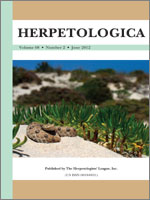Fossil anuran remains from an outcropping of Oligocene sediments in central Patagonia have been attributed to the extant genus Eupsophus based on their putative similarity to the skeleton of living members of this genus. These remains would represent the only and oldest evidence of the existence not only of Eupsophus, but also of any cycloramphid anuran in Patagonia during the past. Given the scarcity of the anuran fossil record, these fossils have been long considered as significant evidence in the discussion of the evolutionary history of the South American batrachofauna. However, re-examination of these specimens reveals that some skeletal structures were misinterpreted and that these anurans clearly differ from living Eupsophus. Although osteological synapomorphies of this genus are still unknown, there is no evidence to link these fossil remains with the presence of Eupsophus in the Oligocene batrachofauna of Patagonia.
How to translate text using browser tools
1 June 2012
On the Putative Presence of Eupsophus (Anura: Cycloramphidae) In Central Patagonia During the Oligocene
Laura Nicoli
ACCESS THE FULL ARTICLE

Herpetologica
Vol. 68 • No. 2
June 2012
Vol. 68 • No. 2
June 2012
Chubut, Deseadan
Eupsophus
Fossil anurans
Oligocene
Patagonia
Scarritt Pocket




